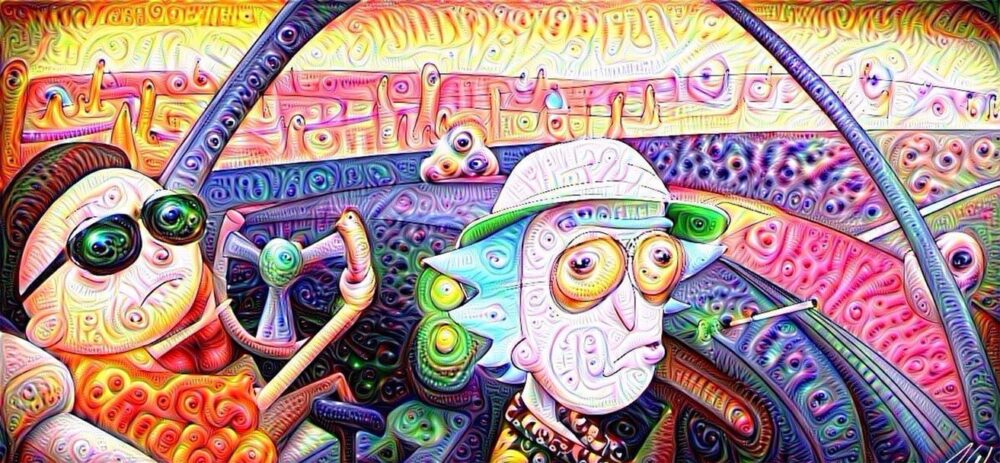LSD: General Information and Recommendations
If you’re wondering, “Should I try LSD?”, it’s important to understand one thing: LSD is considered the benchmark among other narcotic substances. Because only a tiny amount is needed to affect the brain, LSD is often seen as the standard for all things psychoactive and hallucinogenic.
While LSD does not cause physical dependence, overdoses and poisoning are rare. However, psychological dependence and detachment from reality are real risks, which is why some people become desperate to use it. This article won’t cover the chemical formula or history of LSD, but will focus on practical realities.
What Is LSD and How Is It Used?
LSD is slightly bitter in taste, with no smell or color. Besides the common name “LSD,” it’s also called “acid.” Dealers sell it in various forms:
- Microdots (tiny pills)
- Capsules
- Gel tablets
- Paper blotters soaked in acid, often with cartoon or stamp images
- Liquid
The most common way to take LSD is via blotter paper. It’s easy to transport and hide, and one blotter is usually enough for 2-3 people, depending on the dose. However, the method of ingestion doesn’t matter as much as the outcome: a break from reality for about 12-16 hours.
LSD is synthesized into crystals from ergot fungus, which is the source of lysergic acid. The process is labor-intensive, taking about two days to produce just 100 grams, but sales make it worthwhile for producers.
Effects of LSD
LSD’s effects are highly individual. Generally, users experience increased heart rate, higher body temperature, dilated pupils, hallucinations, feelings of happiness and euphoria, and heightened sensory perception. Under LSD, people often see kaleidoscopic images, hear beautiful music, and feel a deep sense of self. However, sometimes the effects are negative, leading to fear, suicidal thoughts, or self-harm. No one can predict exactly how someone will react, and overdoses affect everyone differently.
Because the effects of acid are unpredictable, the outcome can be dangerous. Users may physically harm themselves or suffer emotional trauma. Increasingly, people report that “bad trips” are replacing the euphoria. Physically, users may experience:
- Body temperature fluctuations
- Heavy sweating
- Blurred vision
- Appetite disturbances
- Insomnia
- Constant thirst
- Nervous tremors
Mentally and emotionally, an LSD overdose can cause:
- Terrifying hallucinations
- Loss of sense of reality
- Distorted perception of surroundings
- Frightening thoughts
- Panic
- Depression and neurosis
Frequent LSD use can overwhelm the brain, leading to more panic attacks and breakdowns, with frightening visions replacing the once colorful hallucinations.
LSD Overdose
An LSD overdose is often accompanied by severe physical symptoms. All the issues listed above can be warning signs that urgent help is needed. Drug poisoning can lead to serious health problems, coma, blood clotting disorders, or even death.
The lethal effect depends on the dose taken. Ergot-derived substances disrupt brain function, affecting the entire body. Frequent panic attacks and depression can occur. Large doses of LSD can cause persistent vomiting, seizures, foaming at the mouth, loss of consciousness, and convulsions. The body tries to expel the lysergic acid, which quickly spreads through the bloodstream. In just 30 minutes, a person can lose control.
First Aid for LSD Overdose
In case of a severe LSD overdose, immediately check the person’s airway, breathing, brain circulation, and consciousness. Poisoning can seriously damage the nervous and immune systems, so speak calmly and quietly. If the person’s condition is critical, they may need intravenous glucose, oxygen inhalation, and cooling.
If the person is aggressive, a sedative can help reduce anxiety and aggression, making treatment possible. For frequent vomiting or diarrhea, give activated charcoal (2 tablets per 22 pounds/10 kg of body weight). The person should rest in a calm environment, free from stress and physical activity.
There are no specific medications to treat LSD addiction. Antidepressants or tranquilizers may be used, but they are often ineffective. If someone has damaged their brain with hallucinogens, only willpower and a healthy outlook can help. First aid can be given, but if LSD use continues, even that may not be enough.
Although there are no official statistics on deaths from LSD poisoning or overdose, its critical impact on the human body should not be underestimated. The wrong dose can leave you trapped in a world of drug-induced illusions, with no way out except death. Don’t play dangerous games with your mind, or it may play a cruel trick on you.
Beware of Fake LSD from Dealers
Often, 80% of products sold as LSD-25 are not genuine, even in many online shops. This was also true on the legendary Ramp marketplace. Two purchases from a top seller (guess who, Z) at 1,700 rubles per blotter turned out to be Shulgin’s NBOMe! There are many such cases, or you might get DOB instead. Trust us, it’s not the same. Choose your product carefully.
How Not to Take LSD
- Don’t take LSD for the first time in a closed space (like an apartment), whether you’re alone or not. If you do, have a sober friend with you to supervise. Otherwise, you might end up “going for a walk” out the window.
- Avoid mixing LSD with stimulants or euphoriants.
- Be aware that smoking hash or hydroponic weed will intensify the effects (it’s better to do this 5-6 hours into the trip, after the “peak”).
- Don’t take LSD in an uncomfortable environment.
Whether or not to take LSD is your personal choice. But if you do, at least do it wisely. Take care of your mind.



